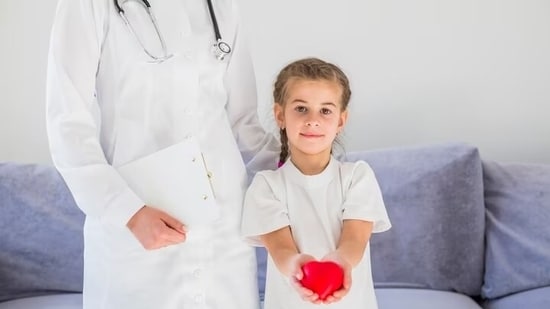Congenital disorders
Sudden cardiac arrest in children: Warning signs and symptoms, prevention tips
Sudden cardiac arrest in apparently healthy children is most commonly due to heart rhythm problems. Know warning signs and prevention tips.
Sudden cardiac arrest in children is rare and most often than not there are congenital heart defects, Kawasaki disease or genetic issues are at risk. Sudden loss of consciousness, fatigue, discomfort in chest, irregular breathing, or fainting during physical activity could be telltale signs of a cardiac arrest and must be considered as a medical emergency. A young child may experience palpitations or a funny feeling in their chest. They may have difficulty in breathing, feel lethargic or have cold-clammy extremities. Children should lead an active lifestyle – go out to play, exercise and eat a healthy diet with the right nutrients to maintain good cardiac health. Parents must ensure to get their child’s heart examined for any abnormalities. (Also read: Heart attack in teenagers: Healthy habits for adolescents to prevent heart diseases)
Is it possible for a healthy child to get sudden cardiac arrest?
“Cardiac arrest, or sudden cessation of the beating of the heart, is rare in children. Cardiac arrest may be seen as a terminal event in critically ill patients with complex heart disease or severe infections. However, sudden cardiac arrest in apparently healthy children is most commonly due to heart rhythm problems, arrhythmias. The heart normally beats in a synchronized rhythm while pumping blood. Abnormal rhythms can cause the heart to beat extremely rapidly, or extremely slowly, both of which decrease effective pumping of blood to the body and even to the heart muscle. The rapid rhythm abnormalities are known as tachyarrhythmias, amongst which ventricular tachycardia and ventricular fibrillation are life-threatening,” says Dr Supratim Sen, Senior Consultant Paediatric Cardiologist, SRCC Children’s Hospital.
“Children with genetic rhythm disorders known as channelopathies, such as long QT syndrome, CPVT and Brugada syndrome, are at risk of ventricular tachycardia or fibrillation, and hence at risk of sudden death. At the other end of the spectrum, children with congenital or acquired complete heart block are at risk of extremely slow heart rates which may also progress to cardiac arrest,” adds Dr Sen.
Warning signs and symptoms of sudden cardiac arrest in children
“Sudden loss of consciousness, especially if recurrent, and if associated with exertion, may be the first warning sign that the child is having an arrhythmia. Palpitations are an abnormal and uncomfortable awareness of one’s own heart-beat and are usually experienced with extremely fast or slow heart rates. Children older than 4-5 years of age might complain of palpitations or a funny feeling in their chest. Younger children with rhythm abnormalities might present with breathing difficulty, lethargy and cold-clammy extremities,” says Dr Sen.
“Parents should be vigilant for symptoms such as sudden loss of consciousness, extreme fatigue, chest discomfort, rapid or irregular breathing, and fainting during physical activity. Timely recognition and immediate action, including calling emergency services and initiating cardiopulmonary resuscitation (CPR) if trained, can significantly impact outcomes. To prevent cardiac arrest in children, maintaining a heart-healthy lifestyle through regular physical activity, a balanced diet is crucial. Paediatric regular check-ups can help identify underlying cardiac conditions early. Parents and teachers educated in basic CPR techniques as bystanders/first responders, creating a safer environment. While rare, cardiac arrest in children necessitates a proactive approach, promoting both awareness and preparedness to safeguard their cardiovascular health,” says Dr Prakash R, Consultant – Paediatric Cardiology, NH Health City, Bengaluru.
“These symptoms can be the first danger sign of a life-threatening cardiac rhythm abnormality and warrant an urgent and detailed evaluation by a podiatric cardiologist. It is always better to diagnose the danger signs and identify patients at risk of cardiac arrest, so that preventive measures with medications, pacemakers and defibrillators can be undertaken. Saving a patient once a cardiac arrest occurs is only possible if resuscitative measures are started immediately. If this occurs in a hospital setting, the patient may be successfully resuscitated with timely CPR and electrical cardioversion. But emergency diagnosis and treatment is essential to save the patient in these situations,” adds Dr Sen.

